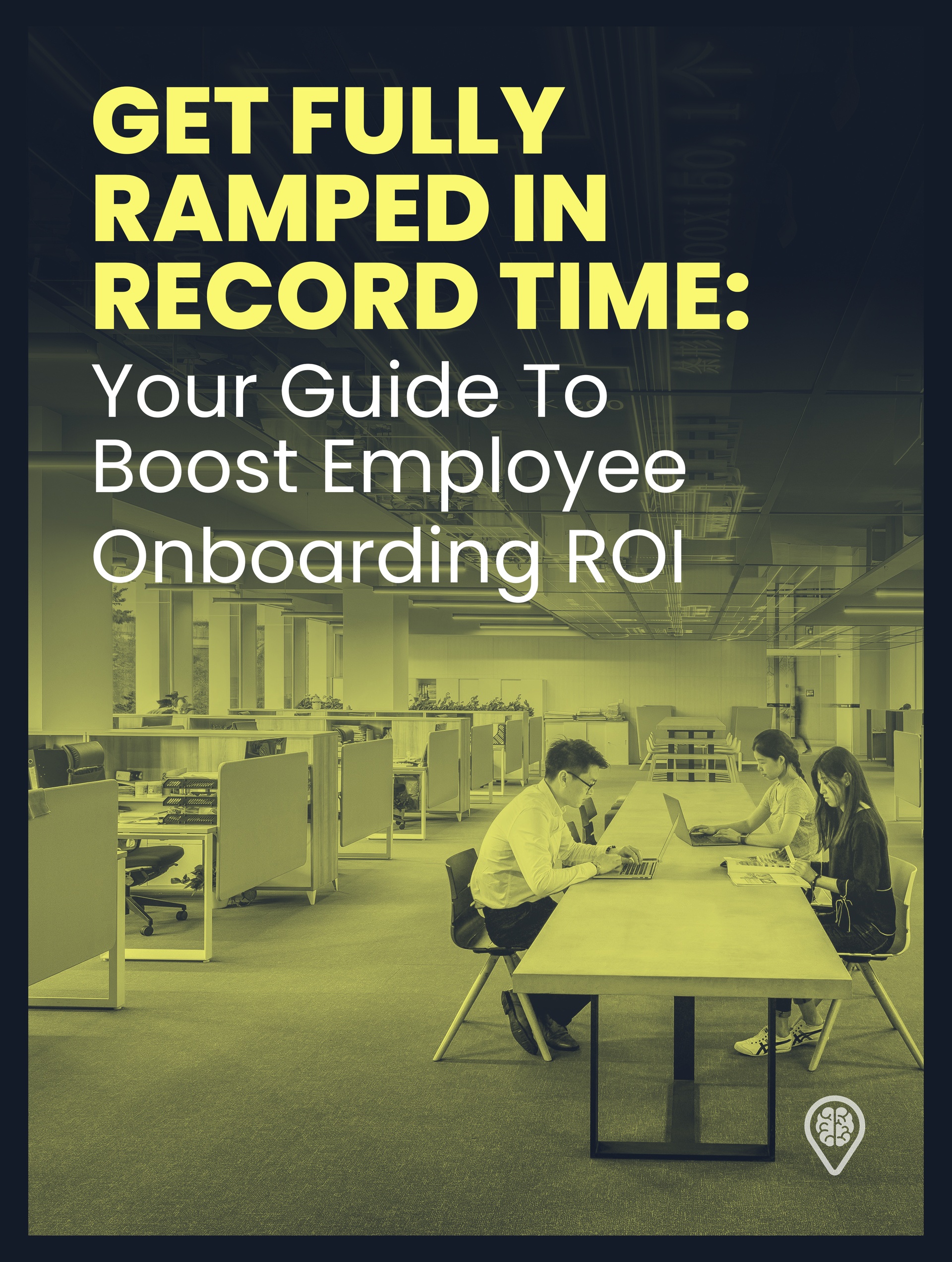Common Challenges In Onboarding eLearning
In 2020, market research reports [1] showed that nine in every ten businesses were using eLearning to train employees. It’s a popular strategy, not just because it’s convenient and efficient, but because eLearning has been proven to boost employee productivity, engagement, and retention.
There’s a significant cost that comes with eLearning L&D initiatives, however. If you’re developing your own course, for instance, research shows that creating just one hour of content can take 100–160 hours and incur $8,150-$36,205. If you are interested in finding out the exact costs, you can use the eWyse calculator, on which you can easily calculate all the costs that go into the development of eLearning courses. Companies need to carefully consider all aspects of their onboarding process in order to achieve a high return on their investment.
Unfortunately, there are a number of barriers that can negatively impact eLearning ROI and make the onboarding process costlier and more time-consuming than necessary—or worse, a complete waste of time and money. Let’s take a look at some of the most common eLearning onboarding challenges and how to overcome them.

eBook Release
Get Fully Ramped In Record Time: Your Guide To Boost Employee Onboarding ROI
Explore how to increase employee onboarding ROI so that you can focus on what is important – the success of your business.
1. Lack Of Employee Engagement
One of the biggest issues with eLearning is that it can be dry and disengaging if not designed and delivered well. It’s no secret that employees are more engaged when they’re interested in and invested in their work. If eLearning content is boring or dry, it’s going to take much longer for your employees to get up to speed and be productive.
You can check eWyse’s case study to see an example of how to turn a complex and essentially dry topic into a fun and engaging eLearning course. With a little help from animation, gamification, and storytelling, the learners were excited about each new course [2].
2. Teaching The Wrong Content
Only 37% of companies [3] consider their eLearning programs effective, despite spending hundreds of millions on them. Often, this can be traced back to the content itself; the information is generic or surface-level, or it’s simply not what employees need to know in order to do their jobs. As a result, they either tune out or forget most of what they learn.
In order to avoid this, it is helpful to conduct a carefully thought out needs analysis. At eWyse, the needs analysis is the first stage of the seven-stage process. It functions as a plan that answers some important questions, such as what is the aim of the project or who the target audience is.
3. Lengthy And Tedious Onboarding Processes
It’s no secret that lengthy onboarding processes can be extremely frustrating for employees. They’re already anxious about starting a new job, and being forced to go through a long and drawn-out process only makes things worse. This can lead to low morale and poor work performance.
A good solution to this is microlearning [4]. It breaks down the content into reasonable chunks that keep the learners at the peak of focus and engagement. You can also check out eWyse’s case study in which a large amount of content was turned into many smaller educational units for maximum efficiency.
4. Incompatible With Cognitive Learning Methods
According to cognitive science research, the best learning takes place when multiple forms of learning are being utilized throughout. There needs to be a balance of recall, practice, repetition, and reflection. eLearning can often be too reliant on rote memorization or online simulations, which can be ineffective and even damaging to the learning process.
This is where blended learning is valuable [5]. Combining the best of both worlds of education might just do the trick for creating perfect solutions for every need. eWyse has experience in taking the blended approach to come up with innovative approaches that surpass eLearning when necessary. For example, when it is assessed that parts of the client’s materials would work better as F2F lessons or workshops.
5. Lack Of Guidance And Support
eLearning training often flops in isolation—not necessarily because employees need a colleague to help them learn the ropes, but because connection and support from management is essential in the early days of any new job.
The employee might learn everything they know about their new position from the onboarding course, but if they’re not getting proper support from their boss or team members, they’re going to struggle to apply that knowledge in a practical setting.
Measuring ROI For Better Outcomes
Each of these barriers can prevent your onboarding program from achieving a high online training ROI. That’s why measuring ROI continually is so crucial; you need to assess how well your program is working and make changes where necessary.
There is a common school of thought that measuring the ROI of your online training is impossible. That’s simply not true—it just takes a particular approach in order to accurately estimate the return on your eLearning investment. The 3C framework manages to significantly reduce these obstacles and helps to ensure the desired outcome, which directly increases ROI. We’ll be sharing our useful 3C framework in the last chapter of this book.
Equipped with the knowledge of what works and what doesn’t, it’s possible to overcome any of these challenges and create an onboarding process that is engaging, relevant, and results-driven.
Download the eBook Get Fully Ramped In Record Time: Your Guide To Boost Employee Onboarding ROI to onboard with ease and stretch your L&D resources. You’ll discover how to not only create a budget but stick to it by leveraging the right outsourcing partner and proven strategies.
References
[1] eLearning Content: Cost or Value?
[2] eLearning 101
[3] 2017 Training Industry Report
[4] Microlearning 101: An Evolving eLearning Trend
[5] Blended learning

eWyse
eWyse is an award-winning agency, using a unique methodology called the 3C Approach to help build perfect eLearning courses that engage, entertain and educate learners while helping companies to reach their objectives. Let’s discuss your ideas!



















